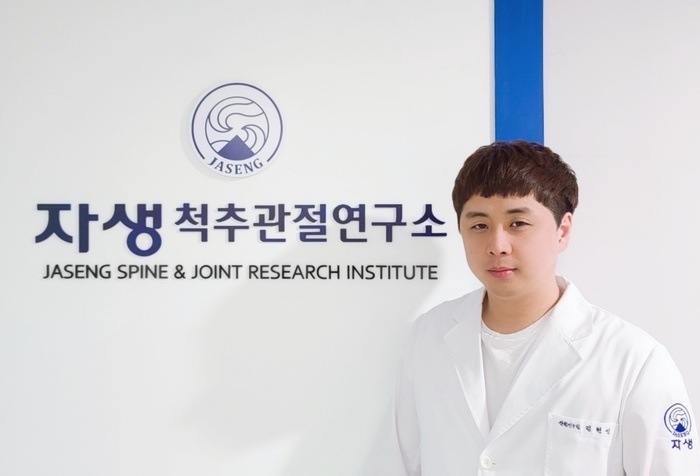RELATED Live

The mechanism behind the treatment of spinal stenosis using bee venom acupuncture has been identified for the first time.
A research team led by Kim Hyun-seong, a senior researcher at the Spine and Joint Research Center of Jaseng Oriental Hospital, announced that they had identified the mechanism of treatment of spinal stenosis using melittin, the main component of bee venom, and demonstrated its effects of protecting cells and improving motor skills. Their study was recently published in the international journal, Biomedicine & Pharmacotherapy (IF=7.419).
First, the research team isolated macrophages from the peritoneum of rats and performed fluorescence staining on inflammatory macrophages (M1) and anti-inflammatory macrophages (M2). Then, the macrophages were treated with iron sulfate (FeSO₄), which causes oxidative stress, to induce spinal stenosis, after which the cells were treated with melittin at two concentrations (200 and 500 ng/mL) and observed to check for changes. In the body, M1 accumulates iron and causes tissue damage, while M2 discharges iron out of cells and induces anti-inflammatory action to repair tissue.
The results of the cell experiment showed that M1 increased along with an inflammatory response after the treatment with iron and then decreased as the concentration of melittin increased. In contrast, M2 was found to increase in proportion to the melittin concentration. Based on these results, the research team judged that melittin relieves inflammation, which is the cause of spinal pain, and promotes antioxidant action that suppresses iron buildup by reducing M1 and increasing M2.
The research team also carried out animal experiments to examine the anti-inflammatory effect of melittin. After removing the 5th lumbar vertebrae (L5) of rats, the research team inserted biogenic silicon to induce spinal stenosis, administered melittin, and observed the inflammatory changes in the spinal cord tissue. As a result, M1, which had concentrated in the silicon implantation site, decreased according to the concentration of melittin. This confirmed the effect of melittin in treating spinal stenosis by inhibiting the inflammatory response triggered by nerve and tissue damage.
Moreover, melittin was shown to improve motor skills in three types of animal behavior experiments. In a test in which rats’ movements were observed after they had been allowed to roam freely, it was found that the higher the concentration of melittin, the higher the use of hind feet, which is normal, and the lower the rate of slipping on the ladder. When rats in which spinal stenosis was induced were exposed to external stimuli, they quickly tried to avoid them due to hypersensitive nerves, but after administration of melittin, their avoidance slowed down to a level similar to that of normal rats due to an analgesic effect.
“This study has significance in that it was the first to scientifically prove the mechanism of melittin, a major component of bee venom, in treating spinal stenosis,” said Kim Hyeon-seong, a senior researcher at the Spine and Joint Research Institute of Jaseng Oriental Hospital, who also added, “Melittin could be a promising candidate for treatment of not only spinal stenosis but also various other spinal diseases.”
Inquiry